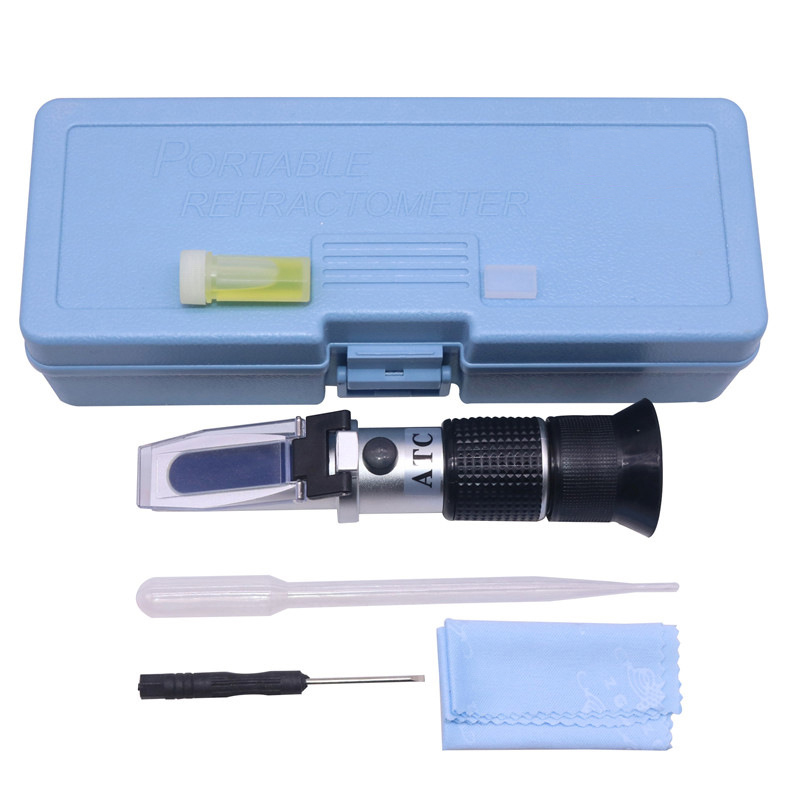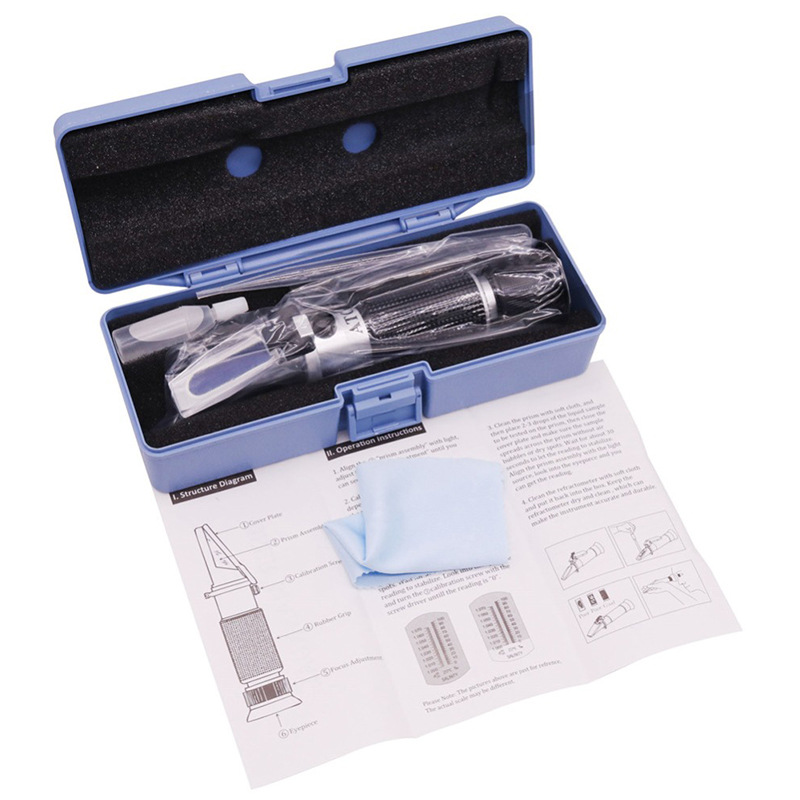





A honey refractometer is for testing the moisture in honey.
Beekeepers use this to ensure their honey is ready and ripe to sell.
Calibrating your refractometer:
– Lift the clear panel that sits on top of the glass and clean the glass or prism with a lint free cloth.
– Add a couple of drops of the reference solution to the glass and spread it out. Make sure there are no air bubbles in the reference solution and close the panel.
– Any air can be squeezed out by gently pressing down the panel and wiggle it slightly.
– Remove the cover for the calibration adjustment piece and have the little screwdriver at the ready.
– Hold the refractometer towards a bright light and look through the eyepiece.
– Focus the eyepiece if necessary, to make the lines and numbers clearer.
– You should see a field of blue and another field of white, with a very distinct line where the two fields meet. This line marks the Brix of the substance measured.
– While still looking through the eyepiece, insert the screwdriver into the screw in the adjustment piece.
– Turn it until the line correlates to the number for the known Brix reading of your chosen substance. (The Brix of honey can be from about 70 to 88.)
– Your instrument is now calibrated and ready to use.
– Replace the cover for the calibration adjustment piece and clean the clear panel and prism using a damp soft lint free cloth.
Refractometers need to be recalibrated regularly, at least every season but preferably more often as the instrument is sensitive. The adjustment screw can accidentally loosen during handling causing the reading to change, and it is also somewhat sensitive to changes in temperature.
Reading your refractometer:
Before applying honey to your refractometer, ensure that you have stirred your honey thoroughly.
Honey that has been sitting for a while will have 2 different readings if taken from the top and bottom of the jar/bucket.
– Lift the clear panel that sits on top of the glass and clean the glass or prism with a lint free cloth.
– Add a couple of drops of honey to the glass and spread it out.
– Make sure there are no air bubbles in the honey and close the panel. Any air can be squeezed out by gently pressing down the panel and wiggle it slightly.
– Make sure not to put too much honey on the prism as it can make it difficult to get a clear reading.
– Hold the refractometer towards a bright light and look through the eyepiece. Focus the eyepiece if necessary.
– You should see a field of blue and another field of white, with a very distinct line or border where the two fields meet.
– In most analogue refractometers there is an ascending Brix scale in the middle, and a descending water content scale on the right.
– The line will go through both scales and thus you can read both the Brix and the water content in percent in the same reading.
– Clean the clear panel and prism using a moistened soft lint free cloth and repeat.
– Take multiple readings and calculate the average, especially if measuring the moisture content of a bucket or large amount of honey.
– If the honey is to be stored, write down the moisture content of the honey on the bucket alongside the batch number and extraction date.
– When finished, clean the refractometer, and put away in its box. Be careful with the prism as any scratches can impair or interfere with the readings.
This refractometer is a ‘Brix Refractometer’.
Brix refractometers:
have a readout that gives the percentage of sucrose, and are used in the food and beverage industry for quality control.